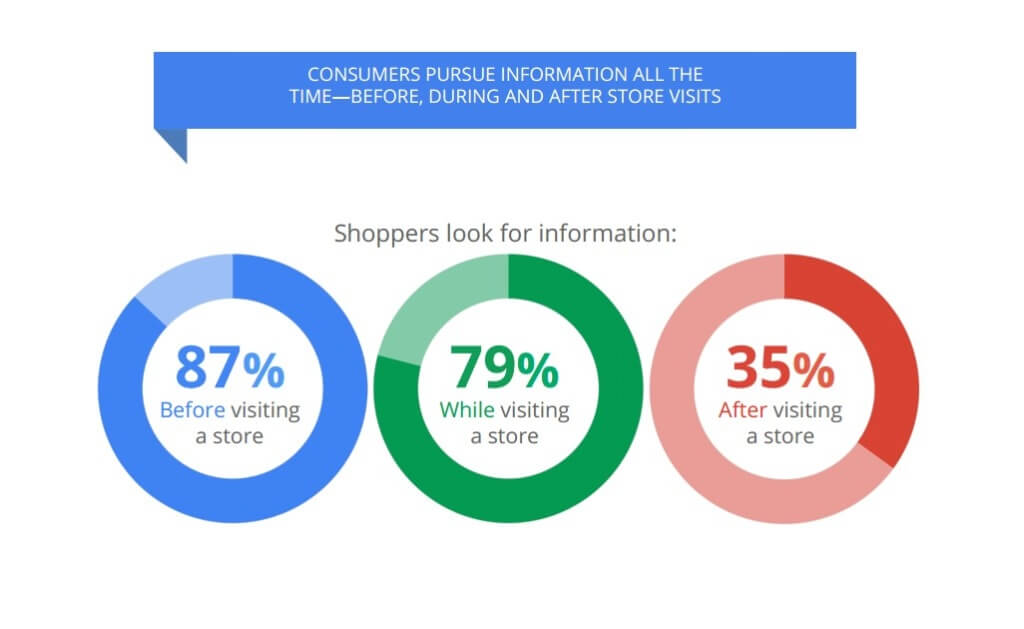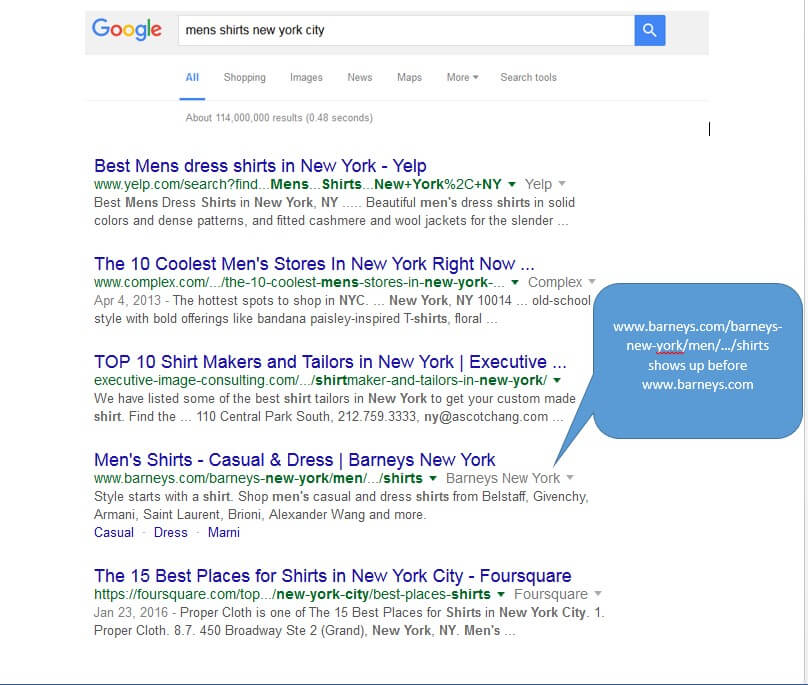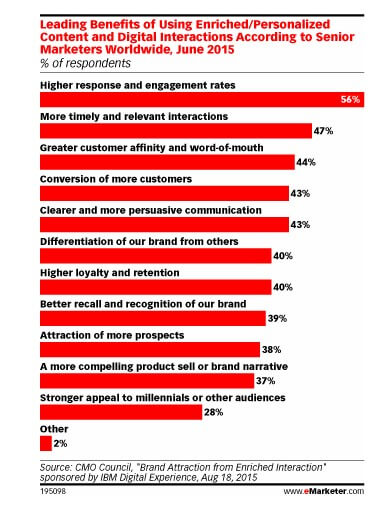In this post we will cover the importance of location accuracy data, unique local content and first party data management when optimizing the mobile shopping experience.
In light of the rapid growth of mobile usage, retailers are rushing to optimize mobile shopping experiences for consumers. According to Nielsen, “for mobile shoppers who make a purchase in a retail store, smartphones are constant companions and the in-store device of choice for most“. For example, the typical path to purchase often includes multiple mobile touchpoints. Customers often check directions or location data prior to a visit (70%). While in the store they use their devices for lists (37%), to check prices (63%) and to scan coupons (34%). Finally, mobile payment is quickly being adopted (23%) as the final sales action.

In support of this, Search Engine Watch adds, “Words like “near me,” “closest,” and “nearby” are increasingly common across the billions of queries on Google every month. More and more, people are looking for things in their vicinity — be it a gym or a mall, a plumber, or a cup of coffee. Google search interest in “near me” has increased 34 times since 2011 and nearly doubled since last year. The vast majority come from mobile — 80 percent in Q4 2014.”
Localizing Marketing Efforts
The key to optimizing this experience is to ensure you are found and accurate when customers are searching locally. For retailers with a national footprint, the accuracy and relevance of the data they are providing to search engines and data aggregators must have a single point of truth.
Name, address, phone number (NAP) and location data, longitude and latitude are essential to the accurate display of store information and location on shoppers’ phones. This may sound trivial but even a digit or a decimal point off and the shopper could be sent to the wrong location or arrive at the wrong time. The resulting miscues to ready to purchase consumers can result in lost revenue in the millions to retailers over time. Also relevant to note is shoppers’ tendency to grow frustrated by repeat inaccuracies and turn to retailers that have taken the time to ensure accurate display of search and map results.
Due to the mobile nature of these queries, search engines look to index content unique to the shopper’s geographic area. Local, relevant and unique content pages are also very important in ensuring that a retailer’s store and products show up near the top of search engine results pages (SERP). If a retailer has pages with more than 80% unique content for their products in a given city, these pages will index before any other results. For example, if you are doing a search on a smartphone in NYC for men’s shirts, pages that have content uniquely created for NYC will index before general search results. URL’s like www.retailerX.com/newyorkcity/mensshirts will index higher than www./retailerX.com/mensshirts.

Personalization is King
As personalization continues to be a hot topic with marketers, senior level executives believe personalizing the message is critical to reaching new customers. They key to doing this accurately and effectively is to make exceptional content accessible and available on a local and long tail basis. Content needs to be unique or the danger exists that the search engines will view it as spam and index it accordingly. This content needs to integrate and complement the retailer’s main website so the presentation is seamless. Benefits of custom pages like this are higher quality scores from the search engines leading to SEO gains, reduced click paths, better qualified leads and improved conversions (30%).

The Power of Data
The last piece of this puzzle is the 1st party data gathered by retailers on their various web properties. Data management has become a critical part of the intelligence retail marketer’s use when targeting ads to potential buyers. A data management platform (DMP) will allow the retailers to capture, organize and custom build audiences for retargeting. Different personas can be built based on the nature of how shoppers arrived at their websites, what content was consumed while there and where they are on the shopping journey (i.e. checking colors available vs. checking prices). This intelligence will allow you to target the casual shopper with creative featuring different color choices or styles for the item the shopper recently browsed.
Retailers can also make the decision to show them creative with special pricing or promotions if they dropped off after checking prices. This knowledge of their audience will also allow retailers to target ads geographically around stores (if browsers happen to be close to one of their locations), time of day or by product category. There are almost endless possibilities about the targeting capabilities of 1st party data but retailers must employ a DMP or a vendor that is proficient in the practice of data capture and data management.
Summary
Retailers must capitalize on the mobile shopping journey or face a high probability of failure. Whether we like it or not it’s here to stay and will only grow to represent a larger and larger percentage of the retail experience. Competent retailers will have experts, either in house or through an agency, in the deployment of accurate data, local content and data management in order to optimize this experience for their customers and maximize profits for their organizations.
Contact DAC today to find out more!




